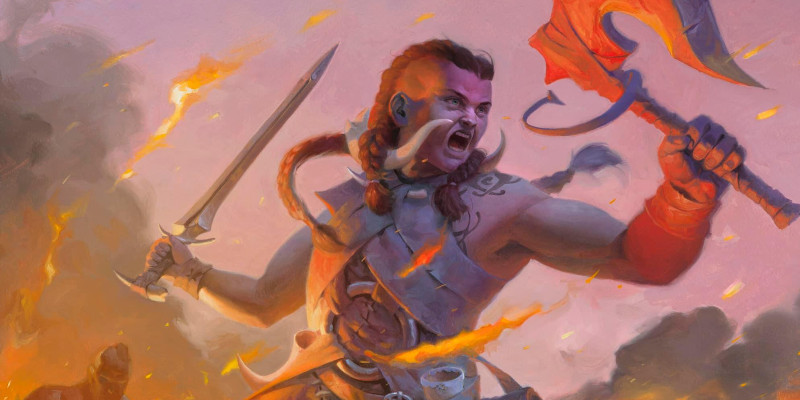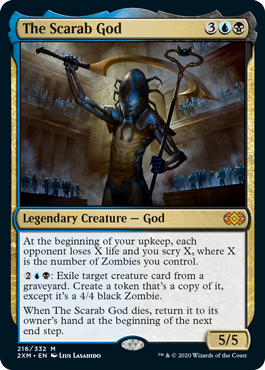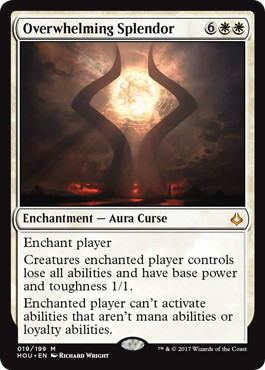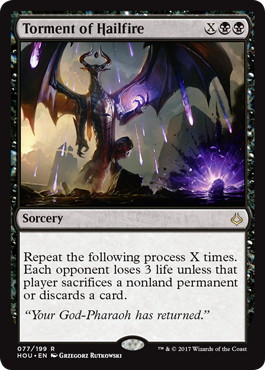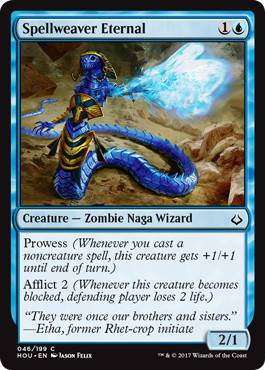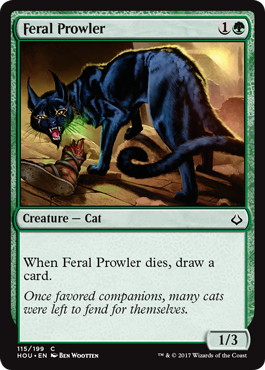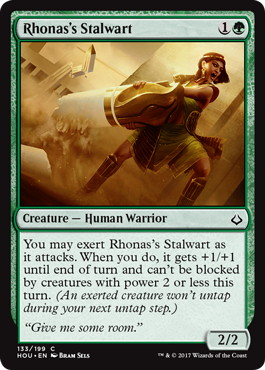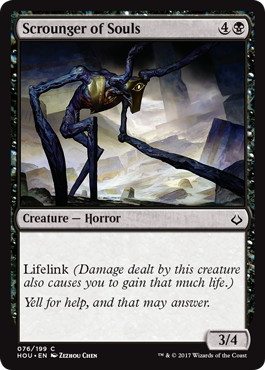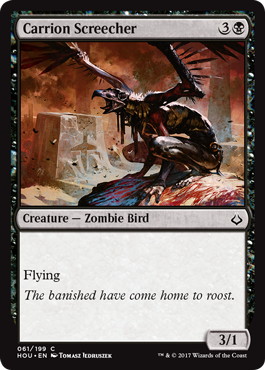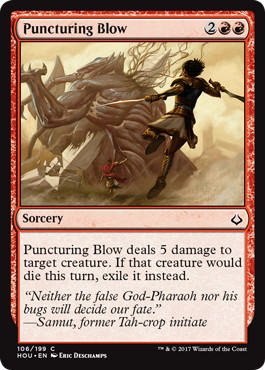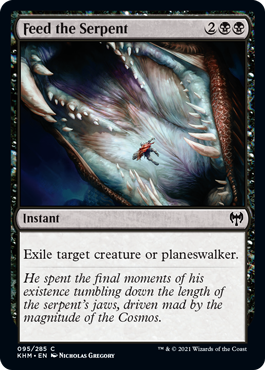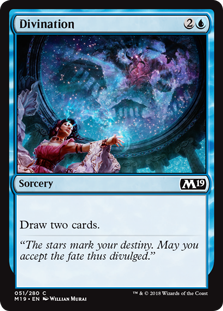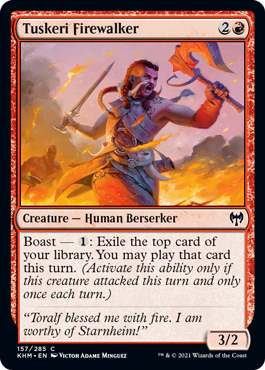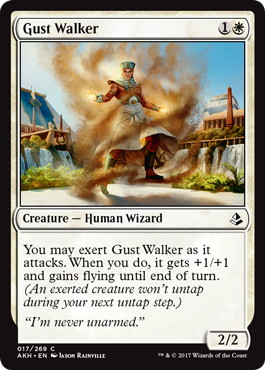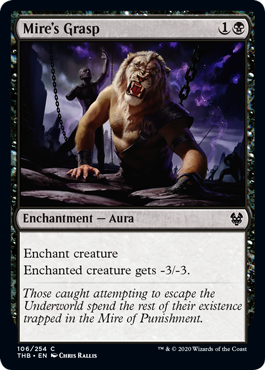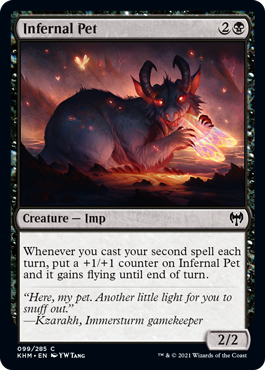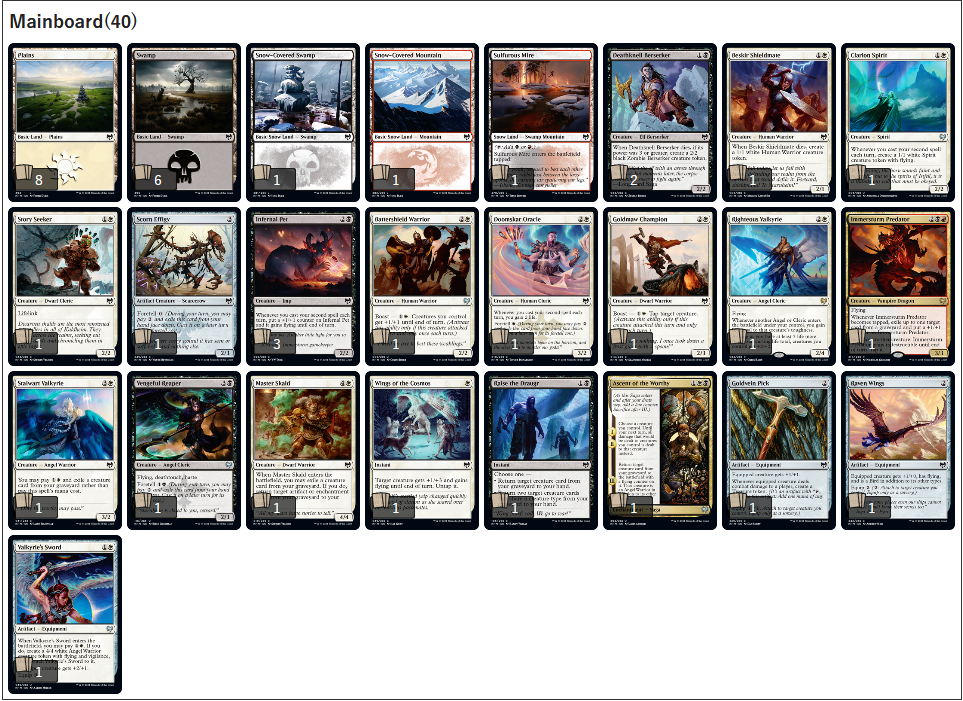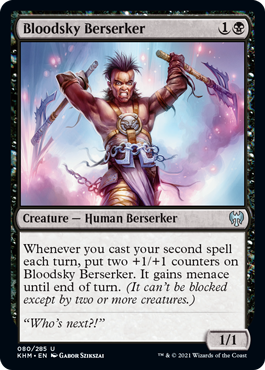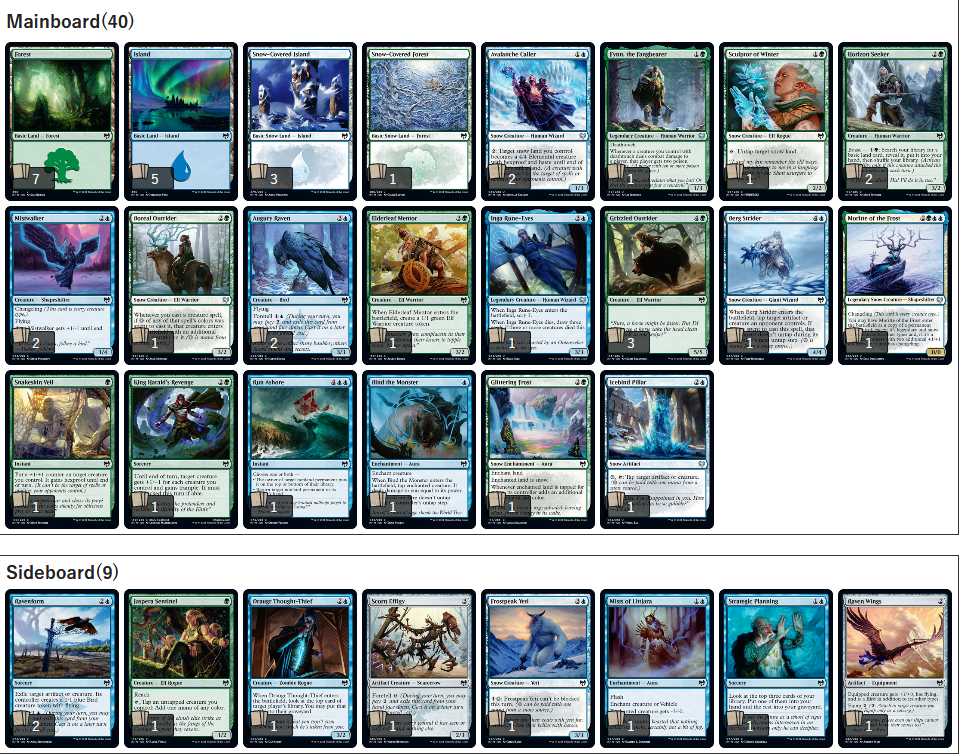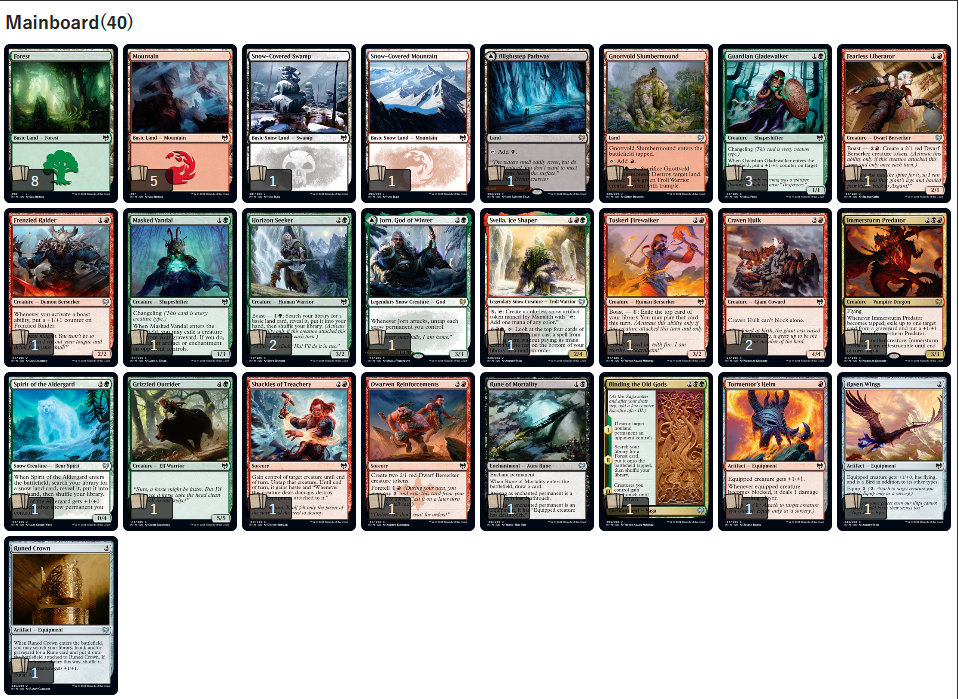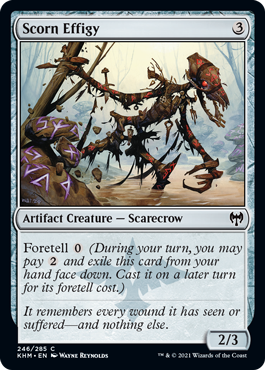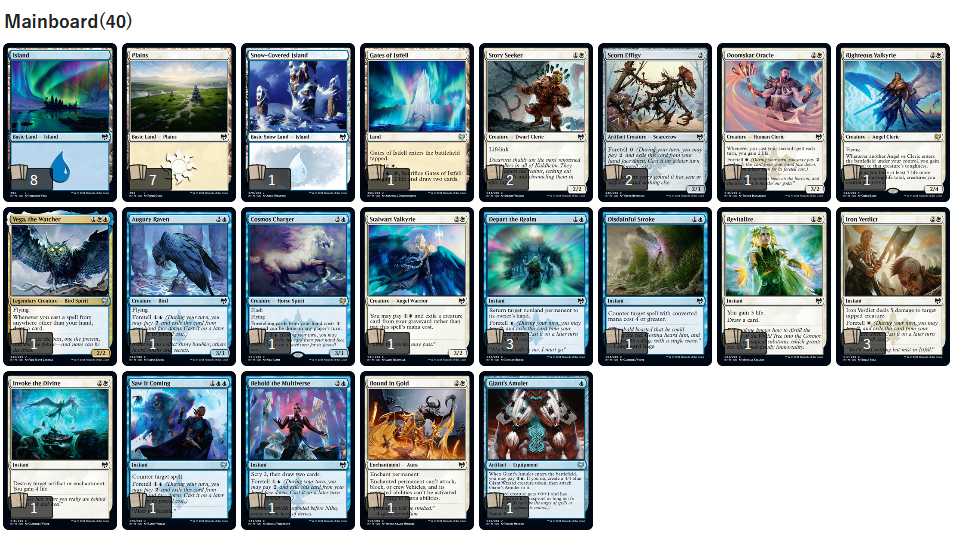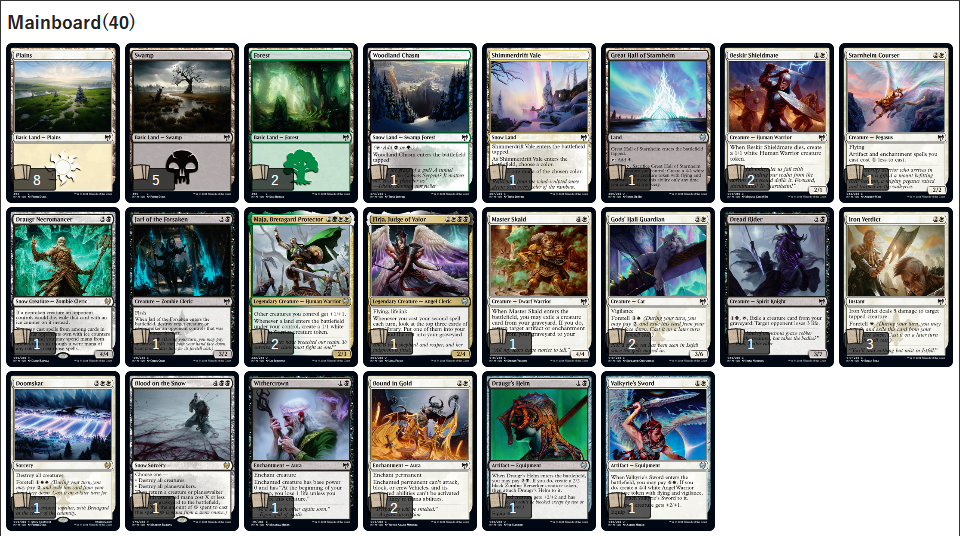- 2021/02/25
- Going Deeper in Sealed – Part 1
- Jean-Emmanuel Depraz
So, snow midrange is good, but not good enough to be the default when your pool doesn’t lend itself to it (around 50% of my Kaldheim Sealed end up as Green Five, which is high relative to other formats, but lower than the number I encounter), and you can’t play a real aggro deck with fewer than three equipment. Where does that leave you if your pool doesn’t have any of that?
3. Dynamic Midrange vs. Patient Midrange
When testing Hour of Devastation Limited, back in the days when you would crack open Sealed product with your bare hands, our little French group (with people like Louis Deltour or Rémi Fortier, to name a few you might have heard of) came to the realization I just expounded: there were a lot of powerful bombs in the set, but some pools were way more gifted than others in that department.
Moreover, compared to the usual Limited set, many of them were very hard to deal with using traditional removal: there were a bunch of board sweepers, Eternalize cards, but also gods that came back if you killed them, 《Hour of Eternity》, 《Overwhelming Splendor》, 《Torment of Hailfire》……“Good Pools”, as we saw them back then, had such a good and diverse late game that aiming for that stage was a very scary proposition. You couldn’t rely on some 《Murder》 and 《Naturalize》 effects to do the job against your opponents’ best cards and you could never be certain your bombs would beat theirs either.
So, because we were unhappy about the level of control we had over what happened in the games, we tried a paradigm shift. But not by playing aggro, because the format didn’t really allow it. The best draft decks were tempo-oriented UR Spells decks with a lot of Prowess creatures, but recreating them in Sealed proved to be very hard. 《Spellweaver Eternal》, to name one card, was hardly replaceable.
Instead, we tried to change the way we saw midrange decks in Limited. Due to the narrow card pool and curve constraints, most Limited decks are somewhat midrange, but do they all try to achieve the same thing? Why would the late game be… the place to be?
After all, we still cared about the curve when we built our midrange decks, tried to muster enough early plays to not waste mana: what if, instead of helping us survive, the role of these early plays became to pressure the opponent enough to make them use their cards suboptimally?
Basically, we stopped focusing solely on card advantage and put tempo back on the map, while not going all-in on aggression. We didn’t play auras or 1-drops with little impact, we still tried to play the colors of our bombs and removal; but instead of 《Feral Prowler》, we played 《Rhonas’s Stalwart》. Despite the amount of punishment for 1-toughness creatures in the set, sometimes 《Scrounger of Souls》 made way for 《Carrion Screecher》.
After all, if we had a subpar pool and the opponent had early interaction to match our plays, we weren’t favored, so why not focus on the games where they would stumble a little, or make them use premium removal spells on random flyers when they didn’t draw 《Blur of Blades》 at the right time? Maybe that way, when our bomb would come down, they wouldn’t have a way to deal with it, whereas if we had just sat defensively up to that point, they would have kept their best cards for what mattered the most.
The point wasn’t to kill them fast unless their draw was particularly bad; it was to put them off-balance, prevent them from using their cards the way you typically do when you expect the games to go long and be decided by bombs.
We called this category of decks (loosely translated from French) dynamic midrange, but saying they are essentially proactive would convey the same idea.
Now I’m sure you all already build dynamic midrange decks from time to time or midrange decks that have some element of aggression built-in. You probably sideboard into more dynamic versions of your deck when the match-up calls for it. But theorizing what these decks should look like and try to achieve helped us have a real, cohesive plan in deckbuilding. Putting the opponent under pressure works way better when you don’t have a 《Feral Prowler》 lurking somewhere, which will effectively be a dead draw against an opponent with a better late game than yours. It also affects the way you play the games!
Without this notion of dynamism, you would never play 《Puncturing Blow》 on a random 3/4 blocker in the mid-game, but rather keep it for a potential god or Eternalize creature; however, if using that removal makes them use their 《Puncturing Blow》 on your attacker because they would be too close to dead otherwise, you might have made a very favorable trade. Your removal spell might not have dealt with whatever ridiculous bomb they have, or theirs might have exiled your future 《The Scorpion God》.
Even if we transpose this to Kaldheim and replace 《Puncturing Blow》 with the much more unconditional 《Feed the Serpent》, what if your opponent has so much card advantage that you will eventually die to the quantity of creatures and not one specific threat? What if they can activate, or even recur 《Path to the World Tree》? 《Feed the Serpent》 is arguably better than 《Puncturing Blow》 used to be, but you still can’t rely on it to win the late game against the heaviest midrange builds, so if your own late game isn’t up to theirs, you might want to use it offensively instead.
Not all pools lend themselves well to building dynamic midrange decks. Sometimes your creatures are not built to attack and you have to assume a reactive role (“patient midrange” has not entered our jargon the same way “dynamic” has, but I like the sound of it). Even in that case, it’s useful to understand the difference. A patient midrange deck will do its best to survive and gain incremental advantages until they can cast one or several game-breaking spells.
Instead of protecting them by proactively baiting out opposite answers, they will wait until they have enough mana to counter the answer, draw their 《Coercion》 or whatever. Personally, my playstyle fits the one of a patient midrange deck way better, so what I’m telling you wasn’t natural for me at first, but I’ve learned to adapt and lean towards dynamism when needed.
It’s also kind of a scale, of course, and not all decks tick exactly one box or the other, but you can and should make deckbuilding choices to push yours in a specific direction.
Speaking of which, let’s get to the final and most controversial choice when it comes to Sealed……
4. Play or Draw??
Nowadays, a lot of people just choose to play first all the time. Although I understand the overall tendency (as threats have become better and better and answer arguably worse, the extra turn tends to be worth more and more compared to the extra card), it boggles me when it’s not at least seen as a relevant choice. If 《Divination》 is a good Sealed card, why wouldn’t you be tempted by a free one?
There are mechanics, like Boast or Exert, that make playing first structurally better. How cheap the removal is also factors in a big way: in Theros Beyond Death, 《Mire’s Grasp》 was the best removal spell and made drawing first much more appealing. But there is one big misconception that I want to point out here: drawing first isn’t always correct or incorrect depending on the format. It depends on your deck and the match-up you’re playing.
Here are a few factors I consider to make that critical decision:
1) The most important one is access to cheap interaction. If there’s a real risk of the game snowballing because my opponent plays threats I can’t immediately match, I will play first. In Kaldheim, 《Withercrown》 is the perfect example: a mediocre card overall, sure, but way better on the draw.
2) The more constructive card advantage I have, the least the extra card matters to me. By constructive card advantage, I mean cards like 《Behold the Multiverse》 that will give me extra cards to work with, as opposed to a 《Skull Raid》 that will affect how many cards my opponent has. Conversely, destructive card advantage, cards like 《Skull Raid》 and 《Elderfang Disciple》, but also 《Doomskar》! will have a bigger impact if my opponent has fewer resources to begin with.
Of course, if such a card doesn’t affect the board, you need enough time to cast it, which makes cheap interaction all the more critical; but if your deck is able to easily stop early drops, I can assure you making an aggro deck discard cards on the play is very, very painful for them. They often need a critical mass to get past your defenses.
3) The worse my manabase is, the more I need the extra card for my draw to pan out. This ties into our first section and is actually a very underrated advantage to draw first. When facing a deck that plays a lot of multi-colored nonsense with (what looks like) too few sources of each color, I’ll regularly put them on the play to increase the odds that they stumble and mulligan……and to my great pleasure, they rarely repay the favor.
To go back to the dynamic/patient terminology, and as a consequence of all this, dynamic midrange decks want to play first while patient ones want to draw first. The subtlety here is that if a dynamic midrange deck faces a patient midrange deck, who should play first depends on how well both of their gameplans are defined. If my patient deck is very cohesive, with a lot of cheap interaction and bombs that help catch up on the board, I’ll happily draw first even against dynamic decks.
Thus, I’ll always choose to draw in the dark. However, if my opponent’s deck is very dynamic (or even plainly aggressive) and I know their late game doesn’t match mine, I’ll switch gears and focus on preventing them from enacting their gameplan, even if it means my own cards lose some effectiveness.
Last, but not least……a lot of people choose to play first all the time. How is that relevant? Well, if you are able to build your deck to perform better on the draw, you can be almost certain that if your opponent wins the die roll, they will help your deck work by putting you on the draw, where you want to be. That’s one aspect that makes me love being firmly on the patient side: you effectively never lose the die roll!
You can further exploit people’s unwillingness to draw first by playing fewer lands or a little less card advantage than you would otherwise(To be honest, these days, I’m actually happy when someone makes me play first even when my deck doesn’t want to, because that alone shows my opponent has some understanding of what’s going on, whether their decision ends up being correct or not).
5. Some Examples From Kaldheim Sealed
This article is about Sealed in its globality, as I wanted to cover some fundamental stuff and I believe the principles that govern it don’t change much from one specific format to the other. Amusingly, a friend of mine (Julien Stihle) who plays more constructed than Limited has this concept of an “inverted mana curve” that he applies in Sealed whatever the set: he just plays the colors with the higher average converted mana cost. -_- The reasoning is that when your pool doesn’t have a powerful enough late game to compete with the others, just drawing more expensive cards each turn can artificially compensate…
Now that’s an oversimplification of the process from an otherwise great player, and it kinda clashes with the dynamic approach I detailed here, but I find it very funny and it might help you with some especially reluctant Sealed pools.
Back to Kaldheim! When talking about Boros and Green Five, I promised I would give you some other examples of archetypes that can appear in Sealed, so here they are. I’ll go over the dynamic midrange variants I’ve found, then show you a typical patient midrange deck that wants to draw first.
A) BW Two-Spells
Key commons: 《Infernal Pet》, 《Raise the Draugr》
This deck went 4-0 in the Traditional Sealed Event. It obviously has one of the best bombs in the set, 《Immersturm Predator》, but being dynamic doesn’t prevent you from playing your best cards, and I believe the dragon performed way better here than it would have in a typical Green Five shell.
This archetype is built around 《Infernal Pet》 and uncommon, better alternatives to 《Infernal Pet》 (《Bloodsky Berserker》, 《Clarion Spirit》). You can also have patient variants that use 《Firja, Judge of Valor》 and different enablers like 《Village Rites》 or 《Revitalize》, but the idea in the dynamic ones is to take advantage of a very low curve and the two-spells-in-one-turn payoffs to put your opponent off-balance.
《Raise the Draugr》 is the best support card, as it keeps the pressure going while providing two spells by itself, but truly there is a boatload of cheap support spells. As often in Kaldheim Sealed, the curve of creatures is the hardest part to get.
B) UG Tempo
Key commons: 《Horizon Seeker》, 《Berg Strider》
One of the weakest pools I opened in Bo1, although the 《Avalanche Caller》 is rare uncommon (7-2). Cards on the right were part of the sideboard.
《Horizon Seeker》 might be the best example of a dynamic midrange creature in the format, especially when you compare it to 《Glittering Frost》. Both provide mana fixing, but 《Horizon Seeker》 is proactive, forces your opponent to react to it or it generates real card advantage, while Frost is the glue that holds all the greedy splashes from the patient decks together.
C) RG (a Little Too) Dynamic
Key commons: 《Guardian Gladewalker》, 《Tuskeri Firewalker》, 《Craven Hulk》 (+《Horizon Seeker》)
This is already less of a dynamic midrange deck and more of an aggressive one, as you can notice via the presence of equipment. The creatures themselves are less autonomous, they lack evasion and therefore need help to get through past the first turns of the game. However, 《Guardian Gladewalker》 is a fine example of a dynamic midrange 2-drop: it deals damage early, then scales and helps your other creatures deal damage on key turns. 《Masked Vandal》 is way better in Green Five because it helps you deal with all sorts of clunky bombs, but here I’d rather have 2 power and ignore these bombs and opposite equipments by racing.
Another element that compelled me to take a screenshot of that deck is the presence of two 《Glittering Frost》……in the sideboard. I originally maindecked them (there are three black cards in this deck after all!) but they didn’t fit the dynamic approach.
D) UW (a Little Too) Patient
Key commons: 《Scorn Effigy》, 《Depart the Realm》
On the other side of the dynamic spectrum, this UW Flyers deck definitely wanted to play first, but could also grind people out and won about half its games each way. I don’t have much love for 《Scorn Effigy》 in either the very aggressive or very patient builds, but in BW and UW it performed quite well for me.
This is something I’m less confident about, but I feel like the classic UW Flyers archetype, which exists in most Limited formats, usually has the ability to play like a dynamic midrange deck or a patient one depending on the match-up and the hands you open.
I enjoy its playstyle, but I have to admit it doesn’t quite fit our theory……《Depart the Realm》 illustrates that special property, as it’s a card you can either play proactively to push through damage or reactively to protect an important threat from a removal spell at the cost of tempo. When you do the latter, you allow the game to drag out, unlike if you had used 《Snakeskin Veil》 in a Gruul deck, and it reminds me more of the use of counterspells to protect bombs in a patient midrange deck.
By the way, I don’t see 《Vega, the Watcher》, the Watcher as a bomb in most Sealed pools, but it was absolutely busted here.
E) Give Me That Extra Card!
And finally, more off-topic, this is one of my very first drafts in the format, that illustrates how good it feels to draw first when you can. 《Withercrown》, 《Iron Verdict》, 《Beskir Shieldmate》, and the two sweepers made it a piece of cake to win against curved starts, even from what looked like a great Boros deck.
Conclusion
That’s all I wanted to touch on for now (which is……a lot already). But it would feel weird to me to write a level-up article in Sealed without mentioning sideboarding even once, so I’ll just redirect you to Pascal Vieren’s masterful piece on the matter.
Whether you’re new to Sealed or already an enfranchised player, I hope you found something here that piqued your interest and that the format looks deeper to you now than before. It’s my second favorite, just after the draft, and I definitely see reasons why someone would like it even more!
I’m delighted WotC has finally decided to introduce Sealed to the Arena Opens, and I certainly hope I’ll get to play Limited on the biggest stage again at some point.
In the words of Rémi Fortier, father of dynamic midrange (IIRC) and one of my first Limited mentors… see you on the battlefield.


